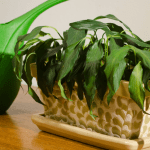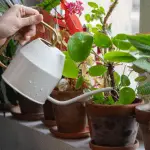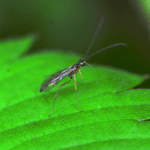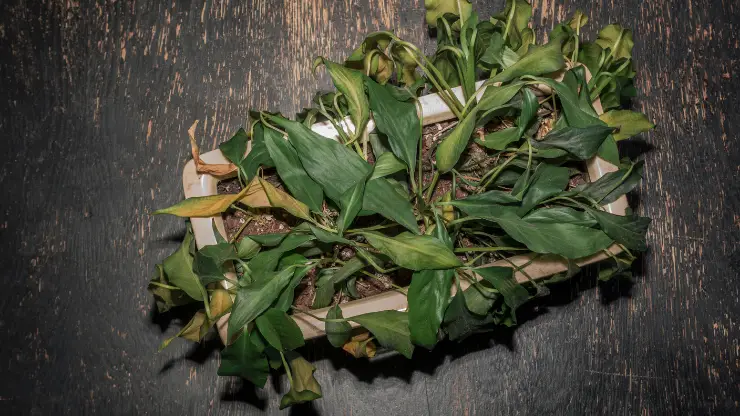
Is your houseplant dried out with drooping leaves because you forgot to water it? As long as it isn’t too far gone ( i.e. completely dead and brown), you can probably still save it. In this post, I’ll show you how to revive under watered plants in just a few easy steps.
How do you revive under watered plants? The best way is to completely submerge the entire container in a bowl of lukewarm water. Then allow it to soak for at least 30 minutes. Read on to find out exactly how this works (and if it’s even necessary for your plant).
Check Your Plant’s Condition
First of all, make sure your plant shows some signs of life. If the leaves are completely brown and crispy with absolutely no green showing, it may be too far gone. It won’t hurt to try and revive it, but just know it may not be possible.
If your plant has some brown, wilted, and/or drooping leaves, but there’s still some green in there, you have a better shot of bringing it back to life. How do you know if under-watering is even your problem? Look for these signs to be sure:
- Wilting, browning, and/or drooping leaves
- Dry soil that may be pulling away from the sides of the pot
- The pot feels very light when picking it up
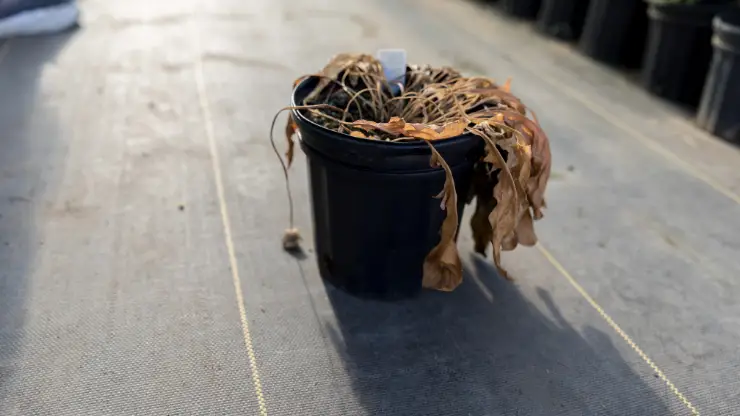
Check the dryness of the potting mix by sticking your finger directly into the soil up to the first knuckle. Does it feel dry? If so, your plant probably needs some water – especially if it’s also drooping or wilting.
You can read more about this topic in my post How to Tell if Your Plant is Overwatered or Underwatered. But the basics are covered above, and you probably know if you haven’t been watering your plant enough, right? If not, check out our care guides for more guidance.
How to Revive Under Watered Plants
Now that you’re sure your plant is suffering from too little water, follow these five easy steps to revive it to its former glory (well, for the most part anyway).
Move the plant to a shady location.
If your plant is currently placed in a sunny window, move it out of the direct sun. When I’ve had to do this in the past, I prefer to take the plant into my kitchen (for small plants) or into the bathroom (for large plants). But anywhere you can fill up a bowl of water will work.
Fill a bowl with lukewarm water.
Use a bowl, pot, bucket, or some other container that’s large enough to fully submerge your plant’s container inside. Make sure to use lukewarm water – not too hot and not too cold. You don’t want to shock the plant’s roots with extreme temperatures.
Submerge the plant in water.
Make sure your pot has drainage holes in the bottom before performing this step. If your plant is in a thin plastic pot that sits inside a decorative container, take the plastic pot out of the decorative container first. Now, submerge the entire pot in the bowl of water.
Soak the plant for 30 minutes.
If your plant is badly dehydrated, it might begin to float. Hold the pot down in the water until it sinks, which may take a few minutes. You can also weigh it down with something heavy like a rock. Allow it to soak in the water for around 30 minutes.
Drain water from the plant.
After 30 minutes, remove the pot from the bowl of water. Allow the plant to sit for 10 minutes or so to drain any excess water before moving it back to its regular location. I like to place mine directly in the sink or bathtub (depending on the size of the plant) to drain.
What Happens When You Water a Wilted Plant
After you’ve performed the steps above, your plant should revive in about an hour. If you had wilted or drooping leaves, you’ll notice that they begin to spring back to a healthy position. If you had yellow or brown leaves, they will not turn green again and may need to be removed.
Related: Should You Cut Off Dying Leaves From Your Houseplants?
If you simply water a badly wilted plant by pouring water into the soil without soaking it as described above, the soil may be too dry to retain the moisture. Soaking the plant is very important in order to revive your under watered plant properly.
When is it Too Late to Revive a Plant?
As I discussed above, there may be cases where it’s too late to revive an under watered plant. This is usually when the plant is completely dead and all the leaves are brown. However, looks can be deceiving. Even if you think your plant looks dead, you can still try to revive it.
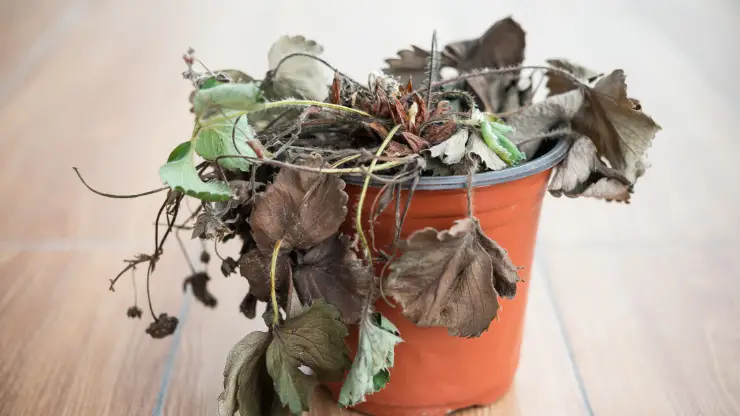
It definitely won’t hurt anything to use the soaking method and see if you can stimulate some new growth. If all your leaves are brown, I wouldn’t bother with removing them until you see some green growth sprouting. Then, you can slowly start to remove the dead leaves over time.
How to Stop Under Watering Your Plants
If you have a problem with frequently under watering your plants, here are some tips to help you stop that habit and keep your plants healthy.
- Don’t water on a fixed schedule. Learn your plant’s needs instead. Most plants need watering when the top 1/4-inch to 1/2-inch of the soil is dry. Gently poke your finger into the soil to test it. If it feels dry, it’s time to water.
- Check plants at the same time daily. Even though you shouldn’t water on a schedule, it helps if you have a routine of checking your plants. I check all my plants first thing in the morning after having my coffee. This way I know which ones need watering that day. This just becomes part of my daily routine, so my plants are never neglected.
- Avoid planting in terra-cotta pots. They dry out more quickly than other types of planters because terra-cotta is a porous material. Instead, opt for plastic or ceramic containers. Just make sure they have drainage holes!
- Make your plants a priority. When it comes down to it, you have to prioritize being a good plant parent. That means regularly checking in on your plants and giving them what they need – water, fertilizer, good potting soil, enough light, etc. Make it a point to check in with each of your houseplants regularly to ensure they have what they need to thrive.
Now you know how to revive under watered plants, so you can save your neglected greenery. Just remember to soak the pot in lukewarm water for at least half an hour, and then drain off excess water. If it’s possible for your plant to recover, this will do the trick. Good luck and happy growing!

